What is a POE,PoE+,PoE++and their application in outdoors?
Table of Contents
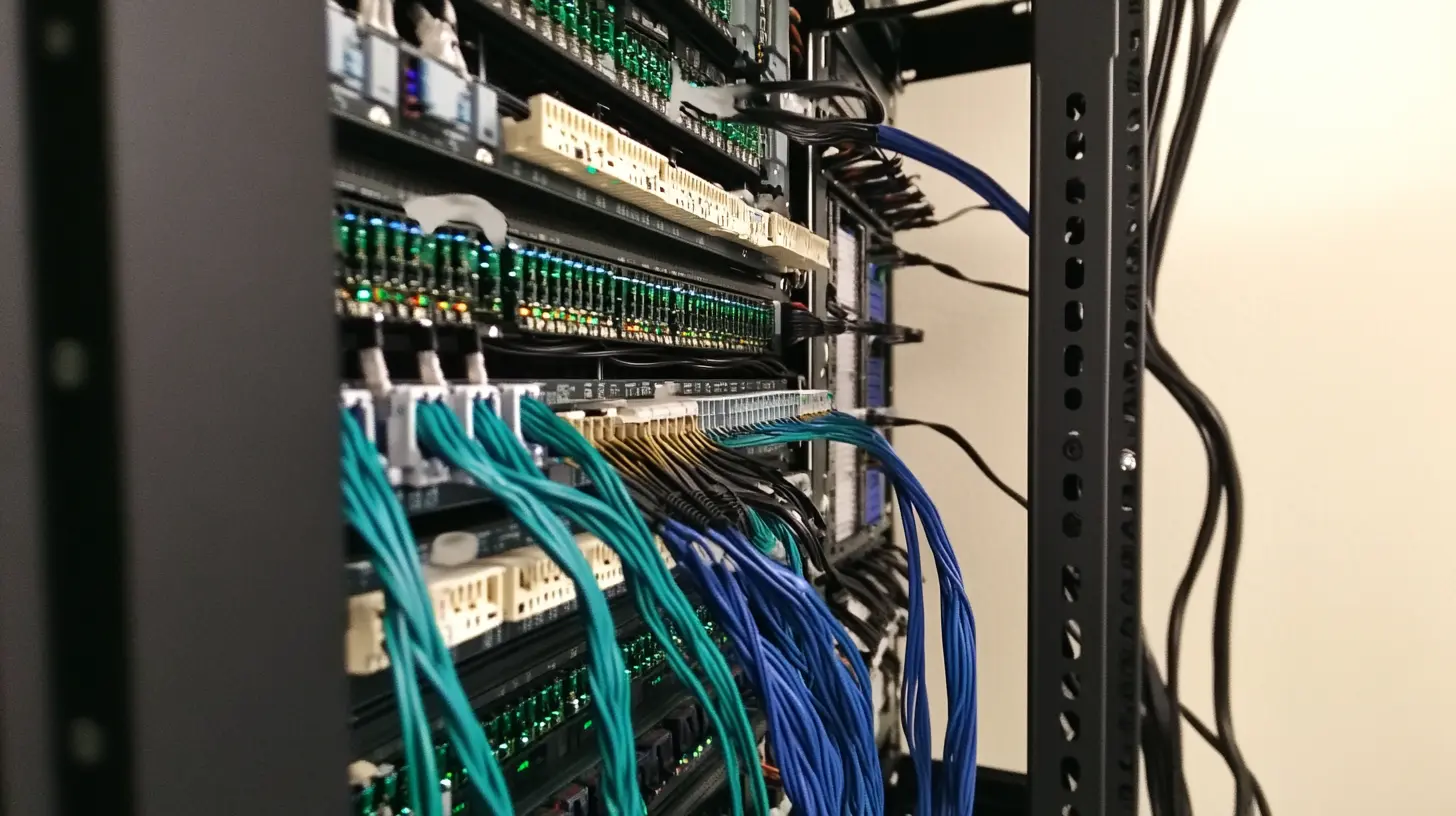
What is a POE,PoE+,PoE++and their application in outdoors?
PoE as power over ethernet is widely used in CCTV cameras, WIFI AP and other scenarios. It greatly facilitates the deployment of equipment and normalizes network backhaul and power supply cables. Especially when PoE terminals are deployed outdoors, it greatly saves deployment costs and improves the maintainability of the network. There are many PoE standards to meet the power requirements of different PoE terminals. For example, PoE (802.3af), PoE+ (802.3at), PoE++ (802.3bt). This article attempts to explain the differences and precautions of different PoE standards, and help readers understand the precautions when deploying PoE in outdoor environments.
Why Use POE
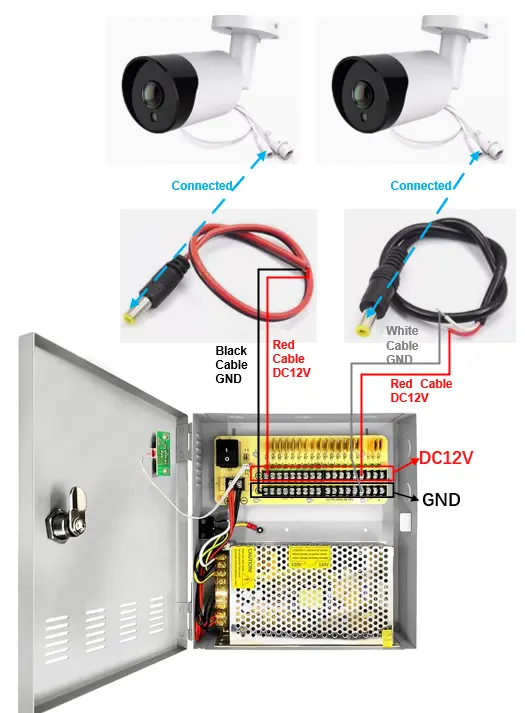
The above figure shows the way the industry generally provided power when connecting CCTV cameras, WIFI APs and other products before the PoE function was available. Although this method is feasible, it actually has great limitations, mainly reflected in the following aspects:
(1) The cables are complex. Because one device requires a network cable and a power cable. When there are many devices and the deployment distance is relatively long, the deployment cost is very high and it is not easy to maintain.
(2) If a power supply method similar to DC12V is used, when the line is very long, there will be voltage loss on the line.
This is the background of the invention of the PoE standard.
The Basic Topology of PoE System
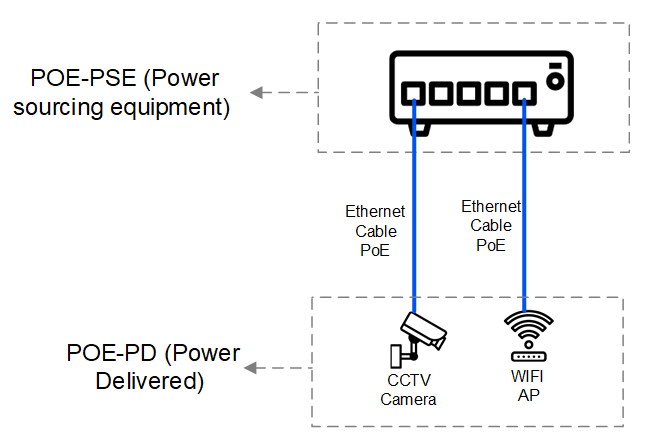
There are two types of devices in the basic model of PoE:
PoE PSE
PSE (Power sourcing equipment) as a power supply device is generally in the form of PoE switch, PoE router or PoE injector, etc.
PoE PD
Power Delivered as a power recipient is generally in the form of CCTV camera, WIFI AP and other types of equipment, they get power from PSE.
PoE PoE+ PoE++ Difference

There are three standards for Power over Ethernet on the market, each designed to power devices with different power requirements. See the figure above for details:
PoE 802.3af can provide a maximum of 15.4W of power. It is sufficient for general WIF APs and Bullet Cameras.
PoE+ 802.3at can provide a maximum of 30W of power. It is generally used for devices with slightly higher power consumption, such as PTZ cameras or outdoor high-power WIFI APs.
PoE++ 802.3bt can provide a maximum of 90W of power. Generally, this standard is used for very high-performance CCTV cameras, and these cameras generally have pan-tilt heads, and the pan-tilt motors require high power.
It should be noted that when your PSE device supports 802.3bt, it can power all 802.3bt, 802.3at, and 802.3af PDs.
On the contrary, if your PSE device supports 802.3at, it can power all 802.3at and 802.3af PDs, but it cannot power 802.3bt PDs.
If your PSE device only supports 802.3af, it can only power all 802.3af PDs, but it cannot power 802.3at and 802.3bt PDs.
Found What PoE Standard Your Device(PD) Requested
PoE 802.3af PSE and PD Selection
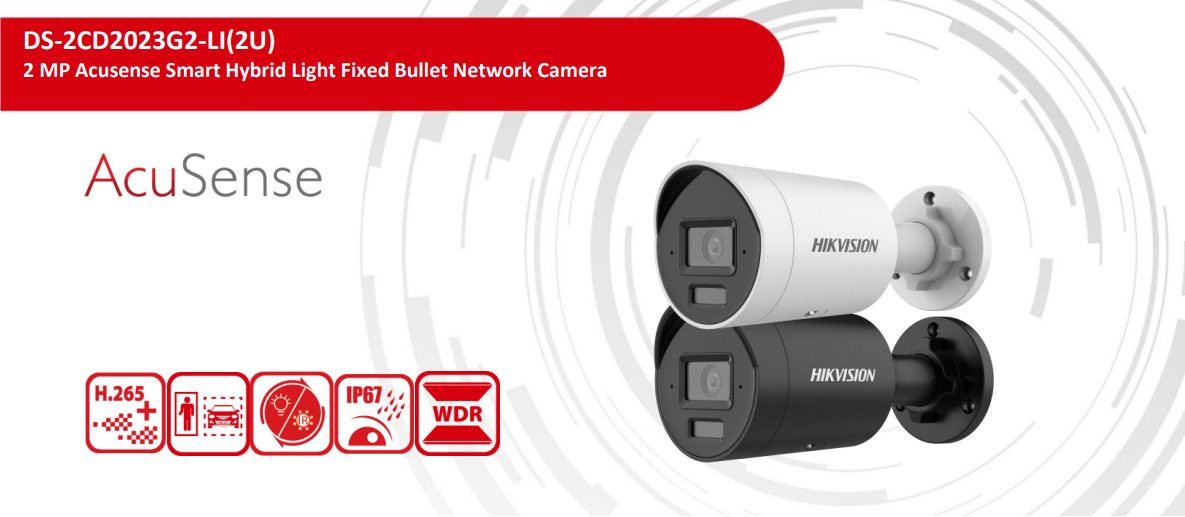

Source: DS-2CD2023G2-LI Bullet Camera
The picture above is a bullet camera from Hikvision. It is not a high-performance product so it does not have high power consumption. We can usually find the power section in the product datasheet, which will be marked with something like IEEE 802.3af, Class 3, max7.5W. This means that this camera requires PoE 802.3af. So when we choose a PoE switch to power it, we only need to choose a general PoE switch because all PoE switches can support 802.3af PoE.
PoE 802.3at PSE and PD Selection
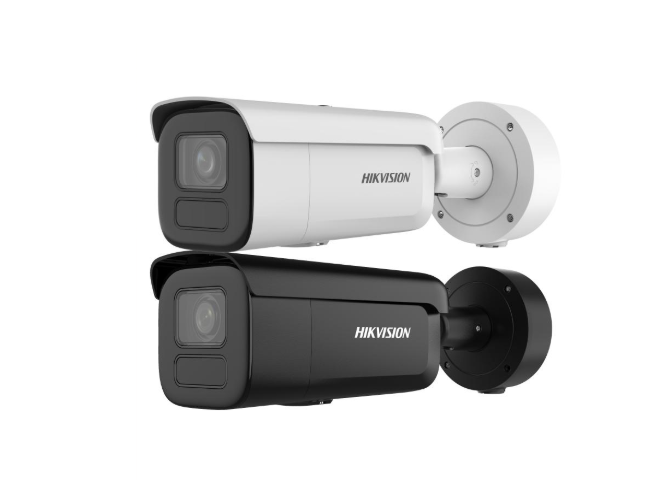
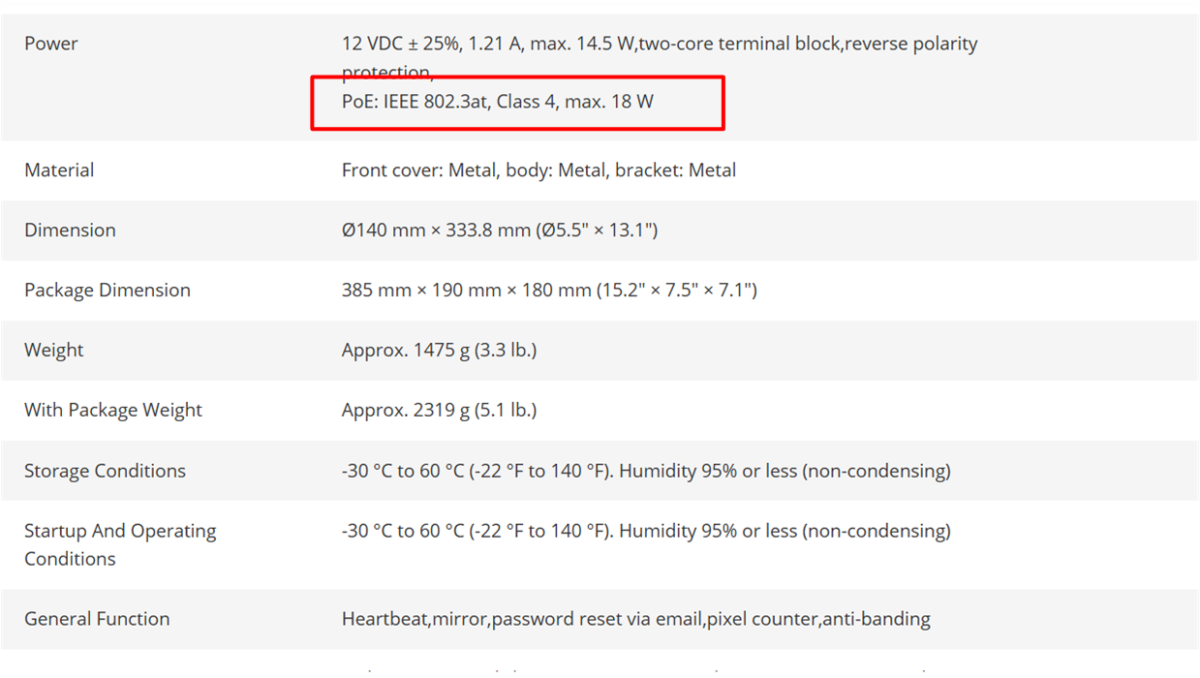
Source: DS-2CD2023G2-LI
The above picture is a CCTV camera from Hikvision. From the datasheet, we can see that its power request is IEEE 802.3at 18W, which is PoE+. Based on this, we need to find the corresponding PSE. Assuming we use a PoE switch to power up this camera, then this PoE switch must support 802.3at PoE+.
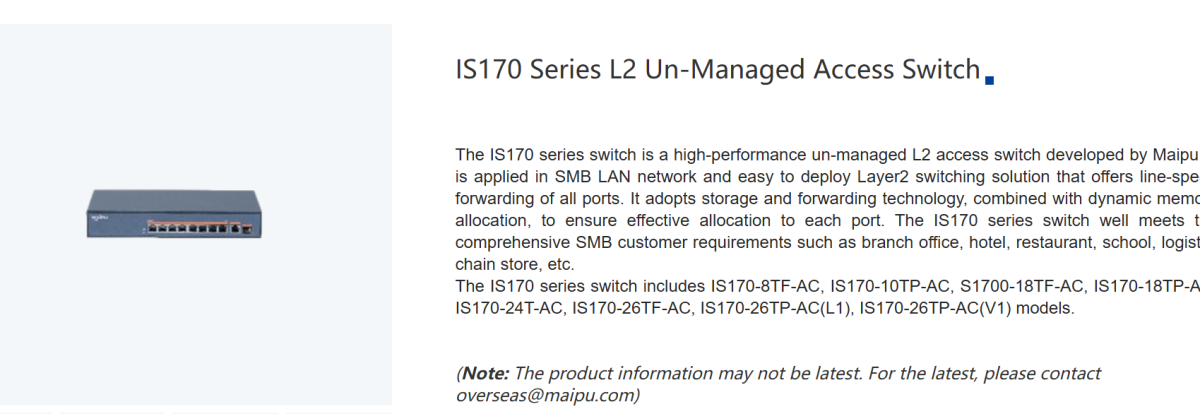
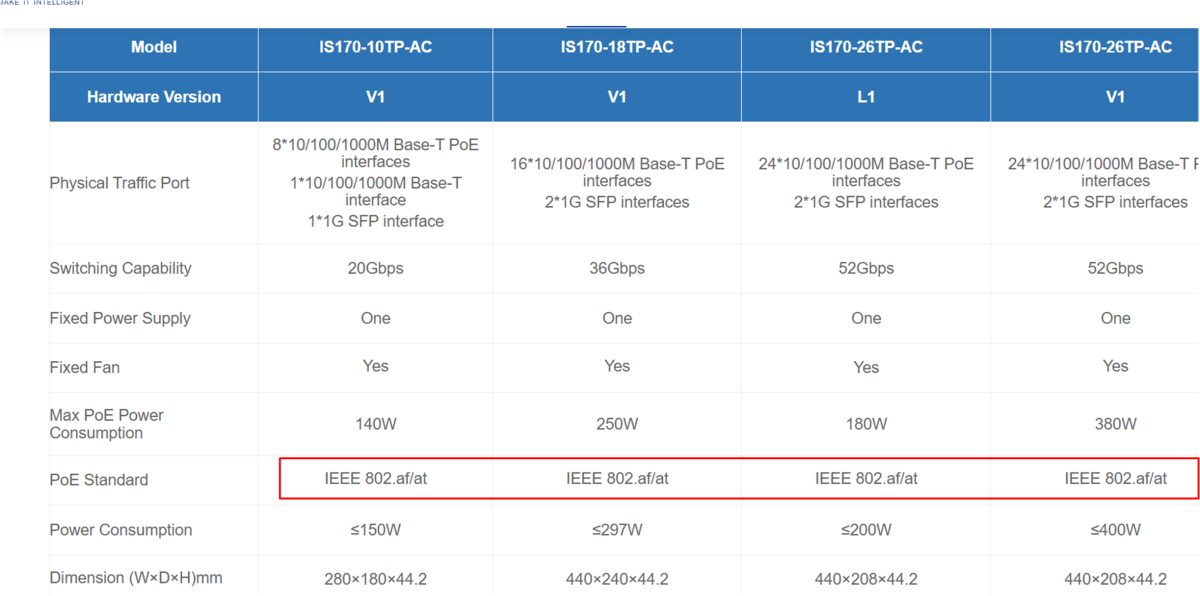
Source: Maipu IS170 Switch
The above picture shows a typical PoE Switch that supports PoE+ 802.3at. When you check the datasheet of these products, you can find the standard it supports in the PoE standard column, and you can see that it can support IEEE 802.3af/at. Please note that when you purchase a PoE switch, please make sure to choose according to the requirements of your terminal.
PoE 802.3bt PSE and PD Selection
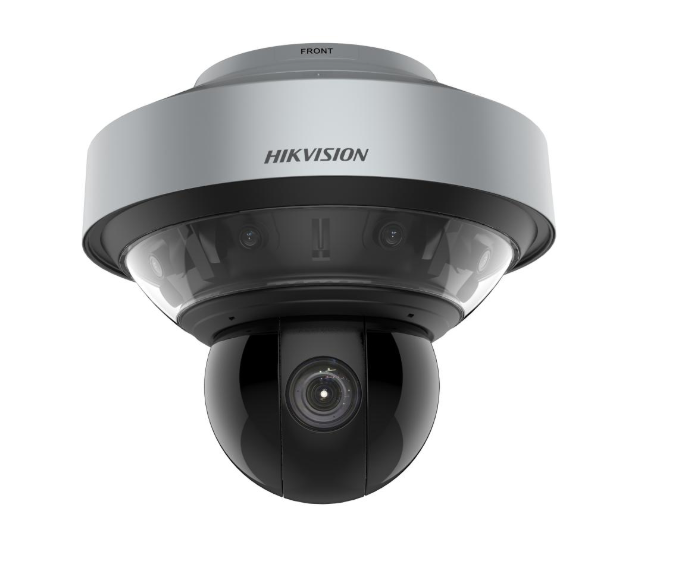
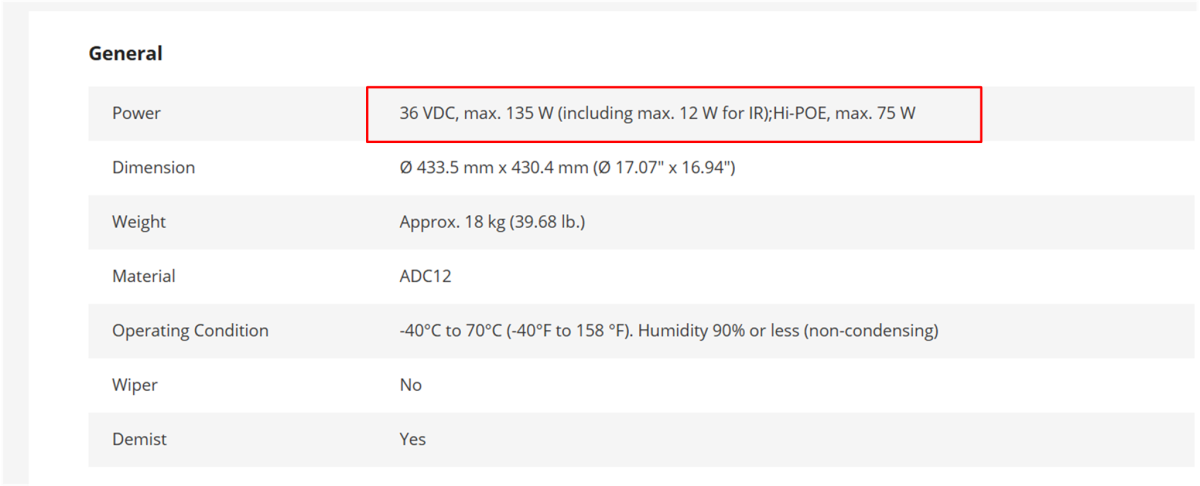
Source: DS-2DP8A440IXG-LEF/624
The picture above is a typical high-performance CCTV camera. This type of camera is actually a combination of multiple cameras, and it also has a pan/tilt function for easy camera rotation. These functions will cause the camera to require more power than in general scenarios. We can see Hi-PoE from its datasheet. Please note that Hi-PoE is PoE++ 802.3bt, and some companies call it Hi-PoE. So how do we find a corresponding PSE device for it?
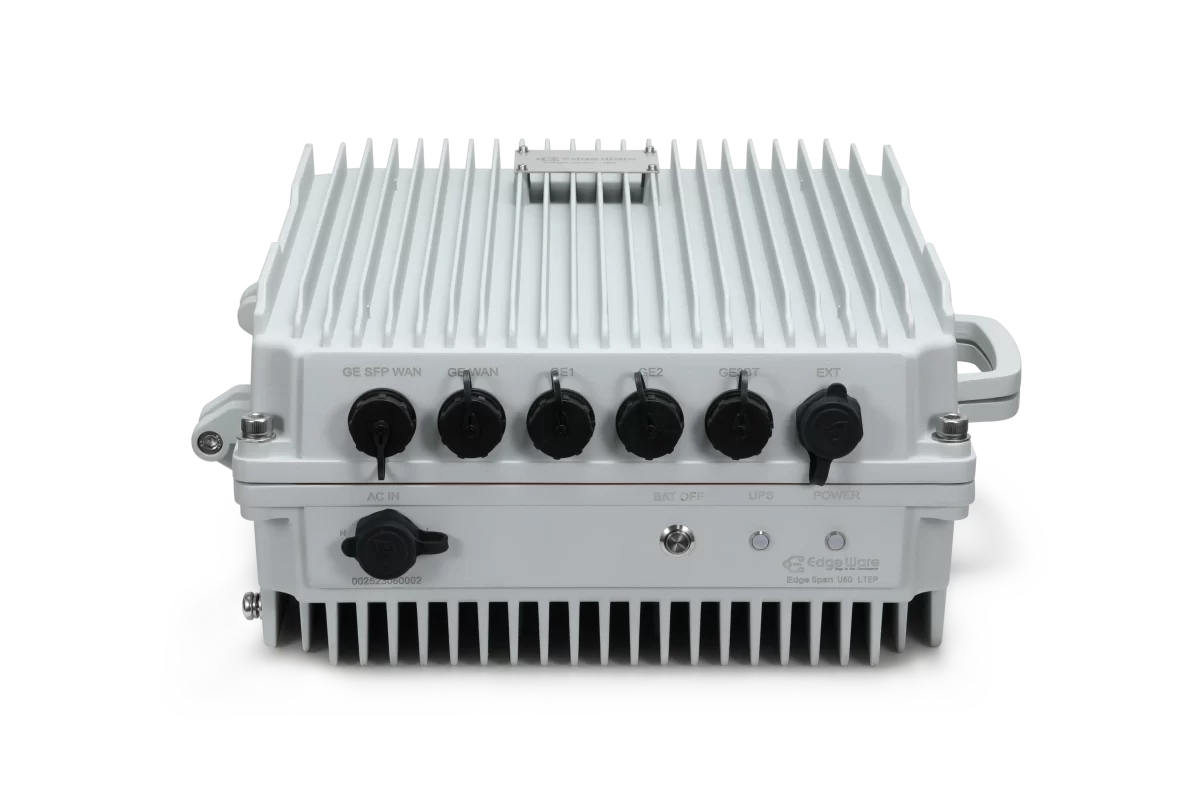

Source: Edge Span 5GP
The picture above is Edgeware’s Edge Span U60 5GP. You can see that it supports PoE++ 802.3 bt. Of course, it supports up to 110W of power. This is Edgeware’s special optimization for this scenario. As we know from the previous introduction, the maximum supported by 802.3bt should be 90W. Edgeware has done some special research and development for the ultra-high power consumption of some pan-tilt CCTV cameras.
Special Considerations for POE Voltage to Power Camera with Motor
POE is the simplest implementation method among so many options for powering up CCTV cameras. This article will not go into details about its connection method. However, we need to remind you of a problem that occurred in project practice. Please note that there are many high-end CCTV cameras using 802.3bt on the market. They not only require high power, but sometimes even have special requirements for voltage range. The figure below is some information about the POE standard. Let’s take a closer look at the Voltage Range:
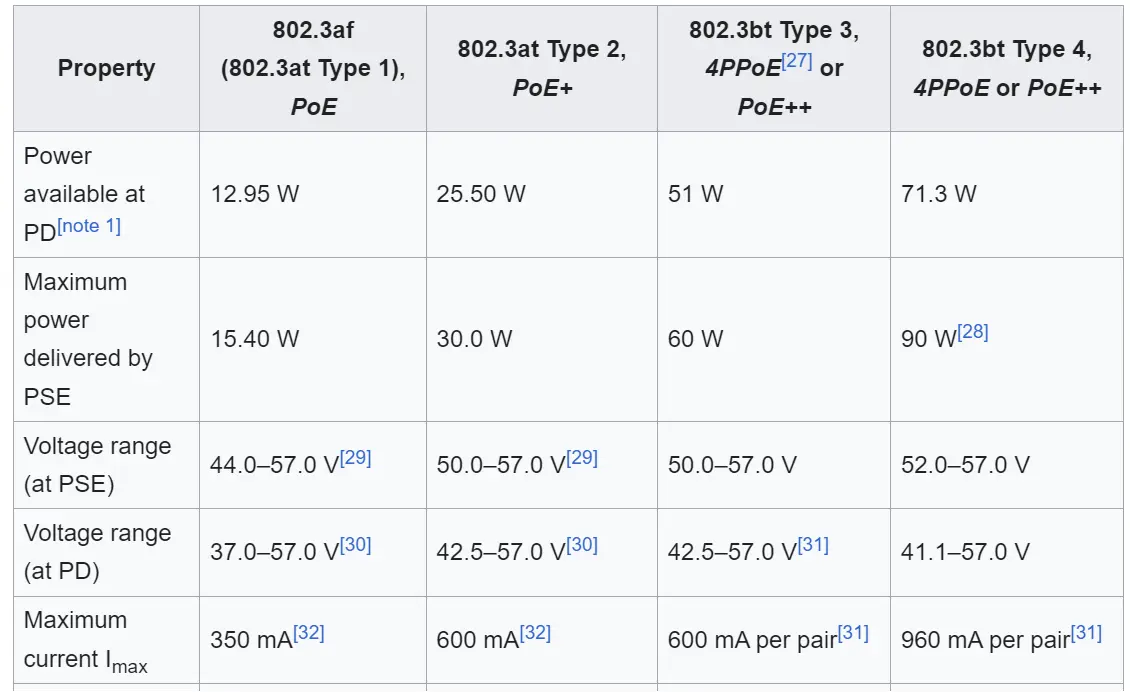
Let’s look at 802.3bt. The voltage range of both type 3 and type 4 PD is a range. For example, the voltage output requirement of 802.3bt Type 4 for 90W POE++ for PSE (CCTV Power Supply) is 52-57V. And the requirement for PD (CCTV Camera) is that it can accept a power supply range of 41.1-57V. But in fact, many manufacturers have special circumstances, which need to be checked case by case. If necessary, CCTV power supply system and CCTV camera will be tested together to clarify the range to avoid deployment risks.
Let’s take a practical example:
This is a high-performance CCTV camera. If powered by POE, it requires 802.3bt. The following figure shows the power input requirements in its datasheet:

IIIustra Pro Gen4 requires IEEE 802.3bt Type4 POE++ power supply, the power reaches 71.3W. So if we build a topology to power it, can it work properly?
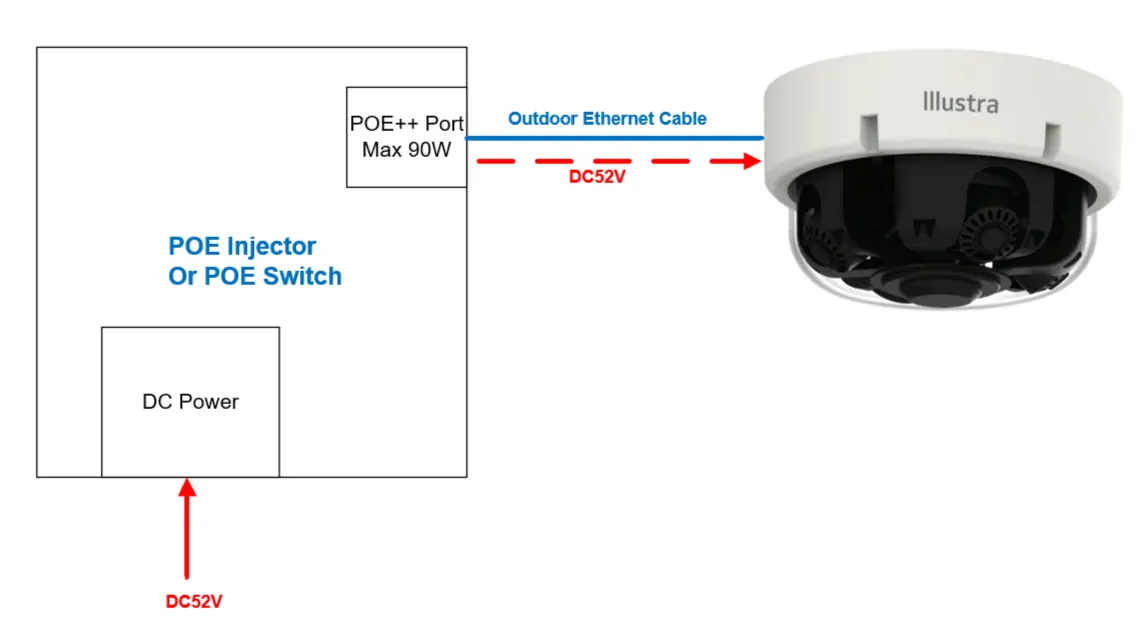
This is an example of an Edgeware project. In fact, the camera was able to power up and work properly. However, its motor did not work properly, which caused the camera to be unable to adjust its angle. From the 802.3bt requirements for PSE and PD, the topology in the figure above should be fine. So we continued to investigate and found that the datasheet mentioned POE BT Injector IA-POE-90-U00 recommended. So we checked the original POE Injector they recommended:
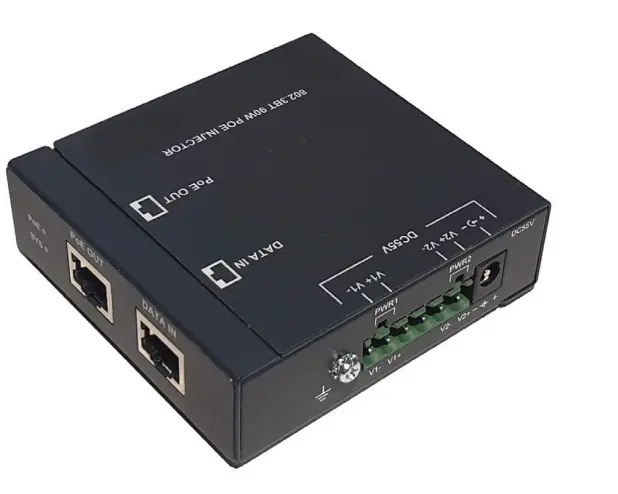

We found that this original POE Injector is designed to be used with IIIustra Pro Gen4, and its required input voltage is 55-57VDC. This means that the required voltage must be higher than the PSE output voltage range of 52-57V defined in 802.3bt type4. As shown below:
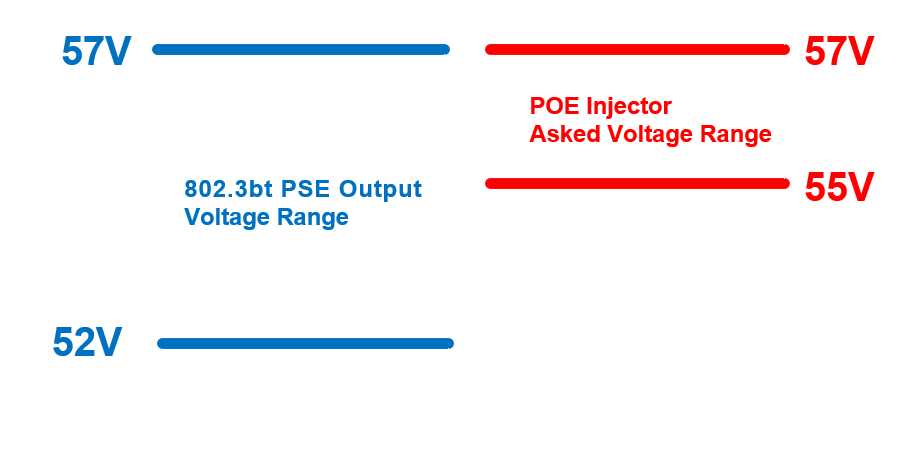
So in this case, although we input DC52V voltage, which theoretically meets the requirements of 802.3bt PSE output voltage range, the voltage requirement of the built-in motor of CCTV camera in this case needs to be higher than 55V, which leads to a series of problems. Therefore, we remind everyone that when encountering 802.3bt POE++ cameras, you need to confirm the voltage requirements with the supplier repeatedly to avoid such problems.
Lighting Protection of POE Connecting CCTV Power Supply
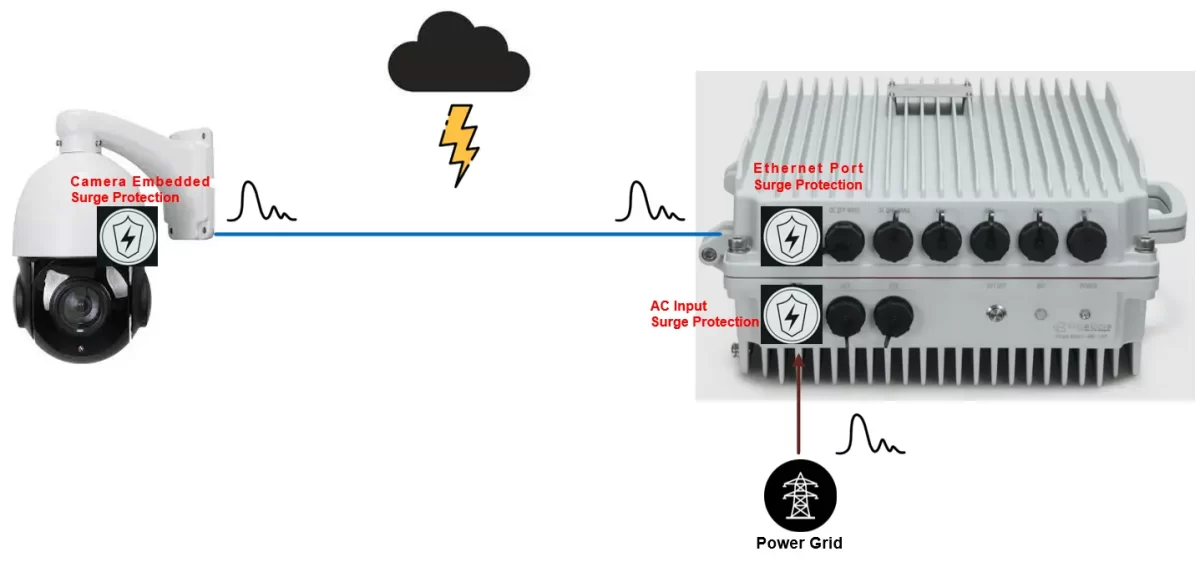
As shown in the figure above, in the POE scenario, we need to ensure that the Ethernet port of the camera, the Ethernet port of the CCTV Power Supply, and its AC Input are all configured with surge protection to ensure long-term stable operation of the entire system.

